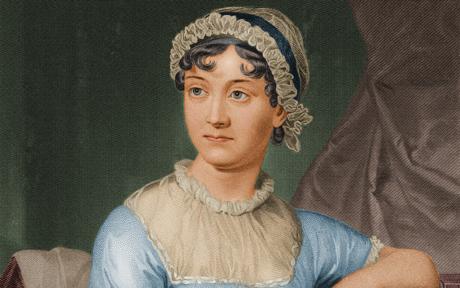Austen’s famous style may not be hers after all
The polished prose of Emma and Persuasion was the product of an interventionist editor, an Oxford University academic has found.
Professor Kathryn Sutherland of the Faculty of English Language and Literature made the discovery while studying a collection of 1,100 original handwritten pages of Austen’s unpublished writings for the Jane Austen Fiction Manuscripts Digital Edition.
The project, led by Professor Sutherland in collaboration with the Bodleian Libraries, King’s College London and the British Library with funding from the Arts and Humanities Research Council has reunited in a free-to-access online archive all Jane Austen’s handwritten fiction manuscripts for the very first time since 1845 when they were scattered by the terms of her sister Cassandra’s will.
The archive was launched on Monday 25 October, alongside a free public exhibition of a selection of manuscripts, first editions and papers related to Austen at the Bodleian Library’s Divinity School.
Professor Sutherland said: ‘It’s widely assumed that Austen was a perfect stylist – her brother Henry famously said in 1818 that “Everything came finished from her pen” and commentators continue to share this view today. The reputation of no other English novelist rests so firmly on this issue of style, on the poise and emphasis of sentence and phrase, captured in precisely weighed punctuation.
‘But in reading the manuscripts it quickly becomes clear that this delicate precision is missing. Austen’s unpublished manuscripts unpick her reputation for perfection in various ways: we see blots, crossings out, messiness; we see creation as it happens; and in Austen’s case, we discover a powerful counter-grammatical way of writing. She broke most of the rules for writing good English. In particular, the high degree of polished punctuation and epigrammatic style we see in Emma and Persuasion is simply not there.’
Professor Sutherland adds: ‘This suggests somebody else was heavily involved in the editing process between manuscript and printed book; and letters between Austen’s publisher John Murray II and his talent scout and editor William Gifford, acknowledging the untidiness of Austen’s style and how Gifford will correct it, seem to identify Gifford as the culprit.’
John Murray II, who was also Byron’s publisher, was Austen’s publisher for the last two years of her seven year publishing career, overseeing Emma, the second edition of Mansfield Park and Persuasion. Professor Sutherland explains: ‘Sense and Sensibility, Pride and Prejudice and the first edition of Mansfield Park were not published by Murray and have previously been seen by some critics as examples of poor printing – in fact, the style in these novels is much closer to Austen’s manuscript hand!’
Studying Jane Austen’s unpublished manuscripts side-by-side for the first time also gave Professor Sutherland a more intimate appreciation of Austen’s talents. ‘The manuscripts reveal Austen to be an experimental and innovative writer, constantly trying new things, and show her to be even better at writing dialogue and conversation than the edited style of her published novels suggest,’ she says.
‘She is above all a novelist whose significant effects are achieved in the exchanges of conversation and the dramatic presentation of character through speech. The manuscripts are unparagraphed, letting the different voices crowd each other; underlinings and apparently random use of capital letters give lots of directions as to how words or phrases should be voiced.’
‘Austen was also a great satirist. This thread in her writing is apparent in the sharp and anarchic spoofs of the teenage manuscripts and still there in the freakish prose of the novel she left unfinished when she died. The manuscript evidence offers a different face for Jane Austen, one smoothed out in the famous printed novels.’
The Jane Austen Digital Edition makes available online Austen’s unpublished fiction manuscripts, from her childhood stories to writings from her deathbed, for scholars and interested members of the public to view for free.


0 Comments